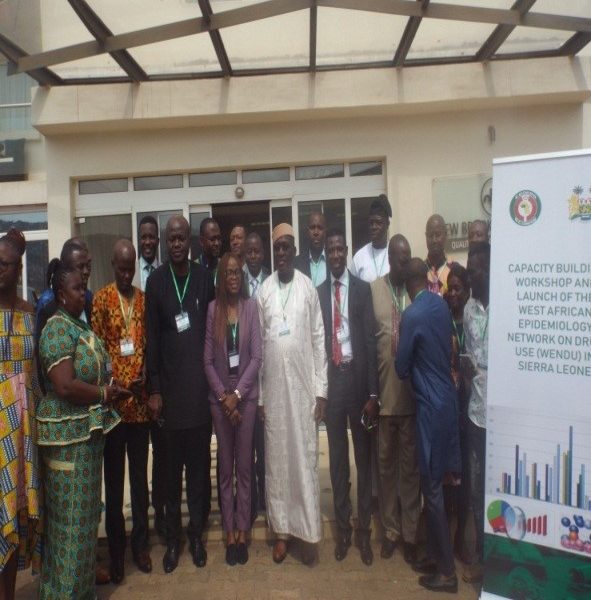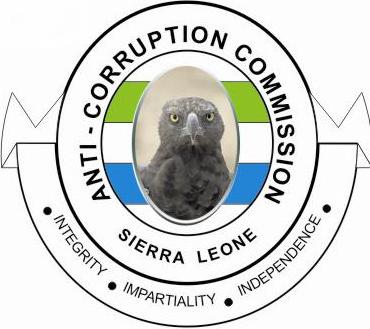Sierra Leoneans accused of scouting airstrips for drug deals
NEW YORK (AP) — U.S. prosecutors in a series of court cases say they are beginning to unravel the latest innovation in drug smuggling: South American gangs that are buying old jets and other planes, filling them with cocaine and flying them more than 3,000 miles across the ocean to Africa.
At least three gangs have struck deals to fly drugs to West Africa and from there to Europe, according to U.S. indictments.
“The sky’s the limit,” one Sierra Leone trafficker boasted to a Drug Enforcement Administration informant, according to court documents.
Most of the cocaine flown to Africa is bound for Europe, where demand has been rising over the last decade. South American gangs are turning to airplanes because European navies have been intercepting more boat shipments along the African coast, trafficking experts say.
“We started stopping the maritime traffic, basically, so then they started going to air traffic more and more,” said Theodore Leggett, a smuggling expert with the U.N. Office on Drugs and Crime in Vienna.
The U.N. agency began warning about trans-Atlantic drug planes after Nov. 2, 2009, when a burned-out Boeing 727 was found in the desert in Mali. Drug smugglers had flown the jet from Venezuela, unloaded it and then torched it, investigators said.
In the last year, arrests in Africa have begun shedding light on how the air routes work. The cases are being prosecuted in a New York federal court because some of the cocaine was supposed to have been sent to the United States.
“The quantity of cocaine distributed and the means employed to distribute it were extraordinary,” prosecutors wrote in one case. They warned of a conspiracy to “spread vast quantities of cocaine throughout the world by way of cargo airplanes.”
Recent U.S. court cases involving trans-Atlantic flights include:
— The Valencia-Arbelaez Organization, broken up by undercover U.S. agents after it bought a $2 million plane to run monthly flights between Venezuela and Guinea. The group claimed to have six aircraft already flying.
— A ring based in Colombia and Liberia, arrested after one of its planes was seized in May with two tons of cocaine as it prepared to leave Venezuela. Prosecutors say the group was planning to fly shipments twice a month. One defendant claimed to manage five other aircraft making similar hauls.
— Three Sierra Leone men, accused of scouting out airstrips and arranging for a four-ton flight of cocaine from South America in March.
Two other recent cases have involved cocaine and cargo jets, though investigators have not revealed yet whether the flights were going to Africa:
— Francisco Gonzalez Uribe, a Colombian trafficker due to be sentenced this month. He was recorded while trying to purchase large aircraft including a DC-8.
— Walid Makled-Garcia, who prosecutors say controlled airstrips in Venezuela used to launch drug flights. Prosecutors say Makled-Garcia was behind one of the biggest drug plane shipments in recent years: a DC-9 that landed in Mexico in 2006 with more than 12,300 pounds of cocaine on board.
Smugglers are able to fly large planes across the ocean undetected because most of the Atlantic is out of the range of radar, said Scott Decker, a criminology professor at Arizona State University who studies smuggling methods. Even commercial airliners crossing the ocean must periodically update air traffic controllers about their positions because they do not appear on radar screens.
“Going that way, especially from South America, really gets you outside the majority of the security envelope for air traffic,” said Decker.
Venezuelan President Hugo Chavez’s decision to sever ties with most U.S. law enforcement agencies in 2005 has made it easier to bring cocaine to staging sites on the Venezuelan coast, said Vanda Felbab-Brown, a fellow at The Brookings Institution, a Washington think tank.
“The DEA is not present there, the Venezuelan military is making money off it, and much of the territory is just not controlled by the government,” Felbab-Brown said.
The global economic slump also has idled hundreds of aircraft. Ads on websites such as Planemart.com offer DC-8s for as low as $275,000.
The Valencia-Arbelaez gang was caught after it contacted an undercover DEA agent in the aviation business in 2007. The group wanted to buy a plane in Moldova and needed help setting up a front company in Cyprus to complete the deal.
The gang was already running flights across the Atlantic, members told DEA agents. One member, Manuel Silva-Jaramillo, said the group had six aircraft, each worth $1.5 million to $1.8 million, and was delivering cocaine both by air-dropping and unloading it on the ground.
“I sold airplanes to these people so I knew what was going on,” Silva-Jaramillo, an American aeronautical engineer, told a New York judge earlier this year. “I knew that they were bringing the drugs to the United States.”
A plane seized in Sierra Leone in July 2008 with 600 kilograms (1,323 pounds) of cocaine belonged to the group, the DEA says. The gang’s leader, Jesus Eduardo Valencia-Arbalaez, said he was paying pilots $200,000 to $300,000 per trip.
Planning sessions for the newly acquired plane were held in Denmark, Spain, Romania and Virginia and at a Best Western hotel in Manhattan. At one meeting, Valencia-Arbalaez sketched a map of West Africa showing points where the drugs would be delivered. The plane could carry seven tons of cocaine, Valencia-Arbalaez said.
The gang used detailed spreadsheets to compute flight costs and distributed codebooks to conceal their plans.
Fuel and pilots were paid for through wire transfers, suitcases filled with cash and, in one case, a bag with $356,000 in euros left at a hotel bar. The gang hired a Russian crew to move the newly purchased plane from Moldova to Romania, and then to Guinea.
Most of the cocaine was destined for Europe, but part of each shipment was supposed to go on to New York.
The European drug market was hugely profitable. Silva-Jaramillo claimed the gang had as much as $82 million in euros stashed in Spain that it needed to launder, according to court documents.
The gang also discussed setting up a methamphetamine lab in Liberia and exporting the drug to Japan and the United States.
The gang had access to a private airfield in Guinea, was considering buying its own airport and had sent a team to explore whether it could send direct flights from Bolivia to West Africa, Valencia-Arbelaez said in recorded conversations.
Valencia-Arbelaez was arrested in Romania in June 2009. He pleaded guilty to cocaine trafficking in New York court and was sentenced in July to 17 1/2 years in prison. Another conspirator, Javier Caro, received 3 1/2 years. Silva-Jaramillo pleaded guilty and is awaiting sentencing.
Drug trafficking is especially dangerous to West Africa because of the corrupting effect it has on already weak governments, said Felbab-Brown, of The Brookings Institution.
In the Liberia case, traffickers offered bribes to Fumbah Sirleaf, the head of the Liberian security agency and son of the country’s president. Sirleaf was secretly coordinating with the DEA. He did not respond to requests for comment about the case.
The flights were to come from Venezuela and Panama. The ring had already sent aircraft into Liberia, Guinea and Guinea-Bissau, one of the traffickers was recorded saying.
The case has attracted attention in Russia because one of the defendants, Russian pilot Konstantin Yaroshenko, says he was tortured by Liberian police before being handed over to the DEA. He and the other five defendants have denied the charges against them.
The Russian foreign ministry accused the United States of “kidnapping” Yaroshenko and failing to tell the Russian government. Prime Minister Vladimir Putin called his arrest an example of the United States overstepping its bounds.
The DEA denies Yaroshenko was abused. The U.S. Department of State said it mistakenly faxed Yaroshenko’s arrest notice to the wrong embassy.
By Associated Press
(Associated Press writer Jonathan Paye-Layleh in Monrovia, Liberia, contributed to this report.)
Stay with Sierra Express Media, for your trusted place in news!
© 2010, https:. All rights reserved.






